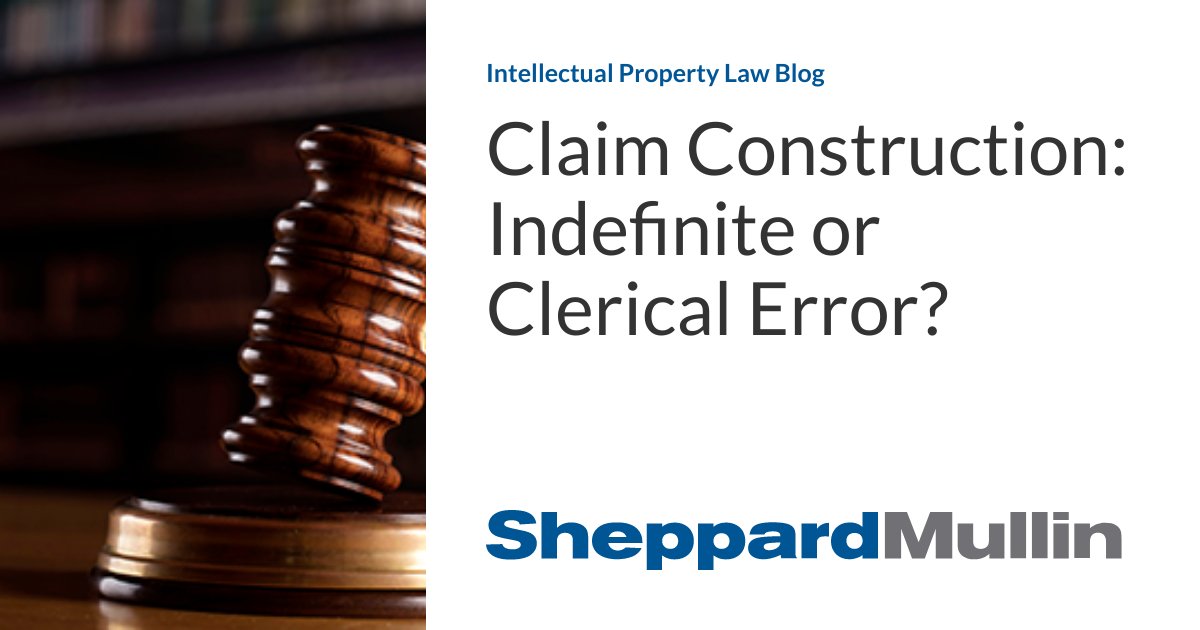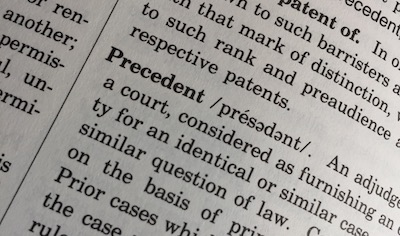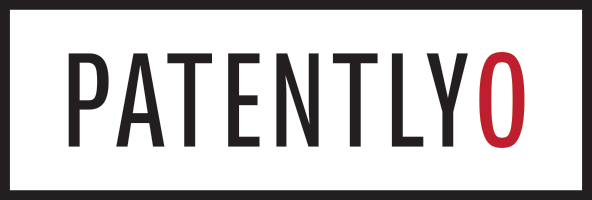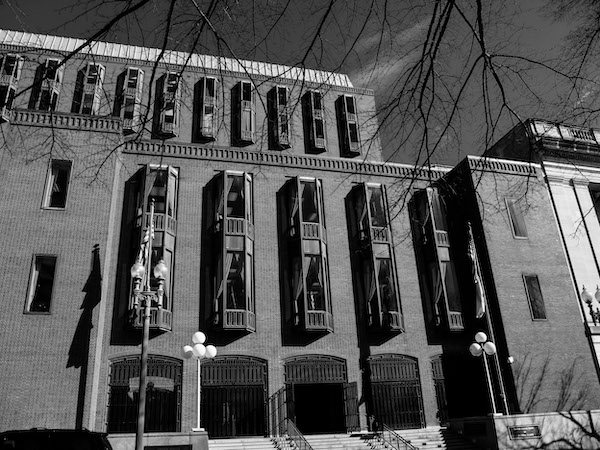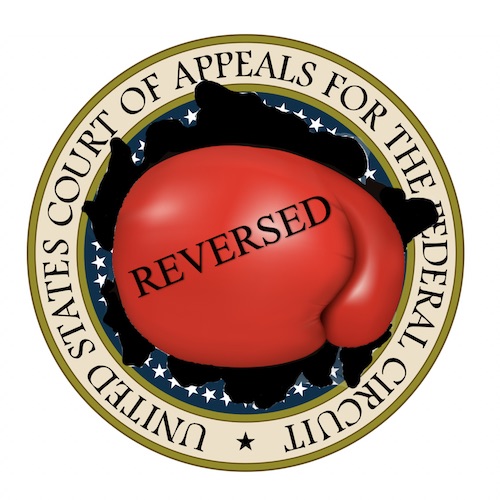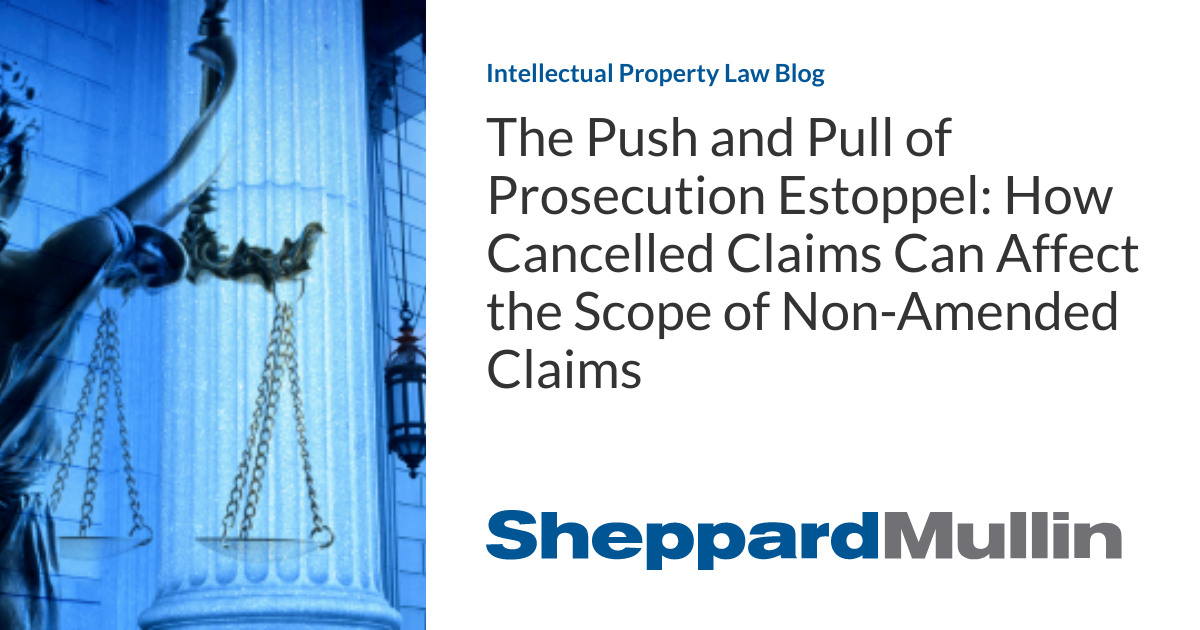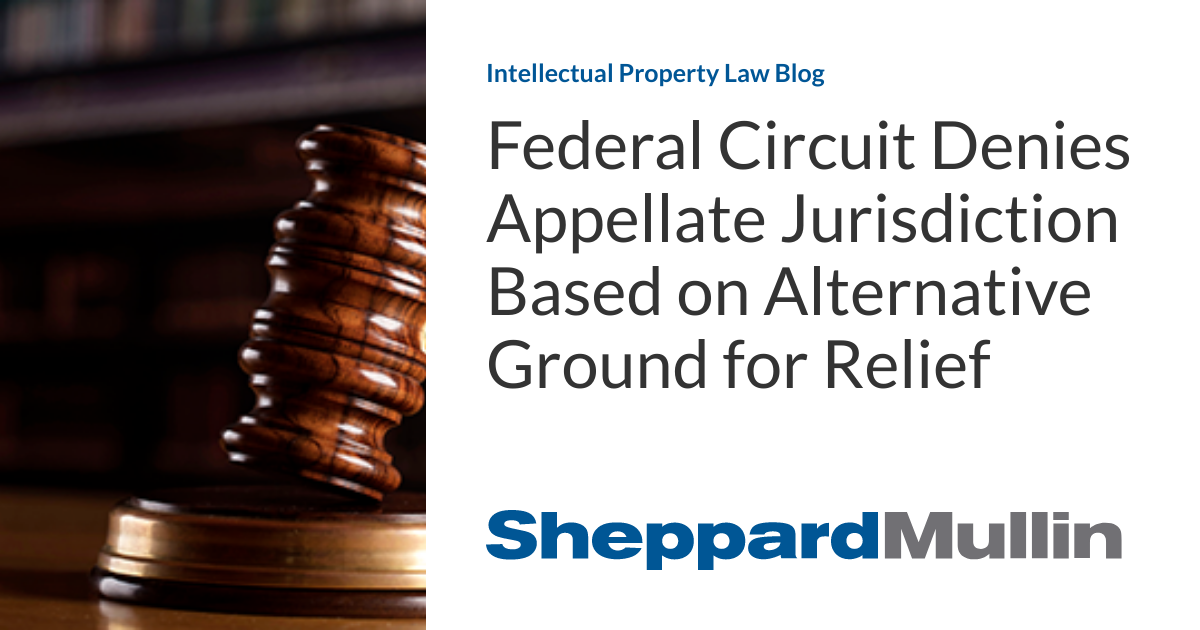#patent-law
#patent-law
[ follow ]
#federal-circuit #intellectual-property #uspto #claim-construction #inter-partes-review #ptab #supreme-court #ipr
#uspto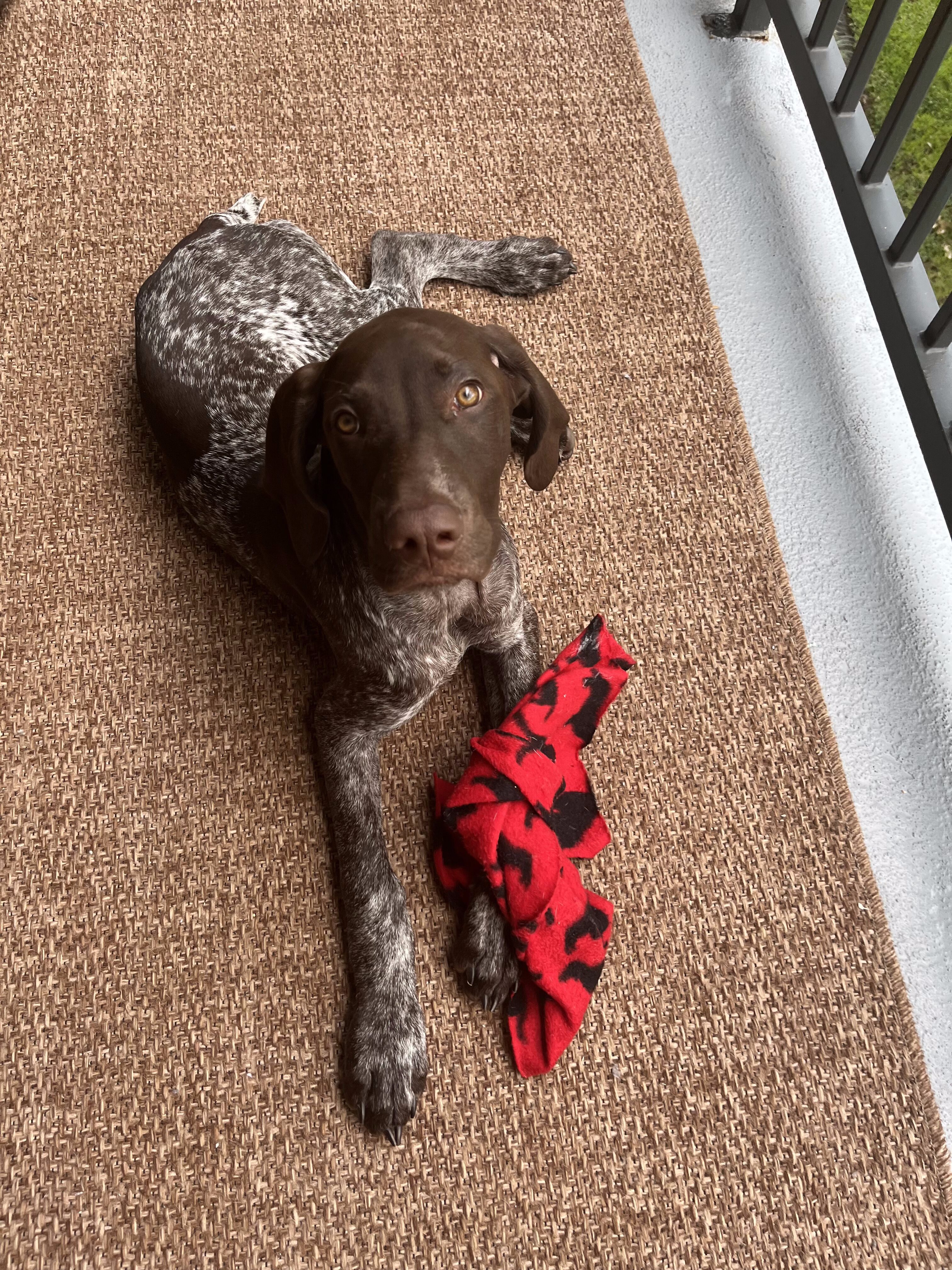
fromIPWatchdog.com | Patents & Intellectual Property Law
2 months ago
Intellectual property law
Other Barks & Bites for Friday, September 19: John Squires Confirmed as USPTO Director; Divided Fifth Circuit Affirms Injunction on Noncompete Clauses; EPO Reports Threefold Increase in Digital Agriculture Tech Since 2000
Intellectual property law
fromIPWatchdog.com | Patents & Intellectual Property Law
3 weeks agoFederal Circuit Affirms Win for Akamai Invalidating Streaming Patent Claims
The Federal Circuit affirmed that MediaPointe's patent claims were indefinite or not infringed due to ambiguous "best"/"optimal" route limitations lacking specification guidance.
fromIPWatchdog.com | Patents & Intellectual Property Law
4 weeks agoInventing Miracles: How Patent Policy Shapes Drug Development | IPWatchdog Unleashed
In our latest IPWatchdog Unleashed podcast, I spoke with Rob Sahr, shareholder at Wolf Greenfield and co-chair of our 2025 Life Sciences Masters™ program. Our conversation zeroed in on a hard truth the public rarely sees: moving a molecule from early discovery to an FDA-approved therapy requires a chain of scientific and economic miracles-and every one of them leans on a reliable patent system.
Intellectual property law
fromIPWatchdog.com | Patents & Intellectual Property Law
4 weeks agoCAFC Overturns $39 Million Jury Verdict, Finds Allergan Hair Loss Patent Invalid for Lack of Written Description
The U.S. Court of Appeals for the Federal Circuit (CAFC) on Tuesday issued a precedential decision in Duke University v. Sandoz Inc., reversing a judgment from the U.S. District Court for the District of Colorado and finding claim 30 of U.S. Patent No. 9,579,270 invalid for lacking an adequate written description. The ruling overturns a $39 million jury verdict finding that Sandoz Inc. infringed the patent owned by Duke University and Allergan Sales, LLC, which covers the eyelash growth drug, LATISSE.
Intellectual property law
fromIPWatchdog.com | Patents & Intellectual Property Law
4 weeks agoThe Supreme Court Should Clarify in Lynk Labs How to Apply Loper Bright
For the past five years, I have taught Legislation & Regulation at Oklahoma City University School of Law-a course at the crossroads of administrative law, statutory interpretation, and the legislative process. Each semester, my students and I return to a central inquiry: when, if ever, should courts defer to agency interpretations, and when must judges exercise their own independent judgment? That question has taken on new urgency in the wake of the Supreme Court's recent restructuring of administrative law.
Law
Intellectual property law
fromIPWatchdog.com | Patents & Intellectual Property Law
1 month agoTesting the Limits of State 'Anti-Troll' Laws
Micron v. Longhorn highlights conflict between state anti-troll laws and federal patent authority, potentially shifting enforcement dynamics as IPR pathways narrow.
Intellectual property law
fromIPWatchdog.com | Patents & Intellectual Property Law
1 month agoPatents, Patients & Progress: A Conversation with Henry Hadad | IPWatchdog Unleashed
Henry Hadad, Chief IP Counsel at Bristol Myers Squibb, describes his path into patent law, creativity's role, and current biopharma IP challenges.
Intellectual property law
fromIPWatchdog.com | Patents & Intellectual Property Law
1 month agoOther Barks & Bites for Friday, October 31: Senator Cruz to Introduce Anti-Censorship JAWBONE Act; USPTO Director Institution Decisions Will Be Short; and Trump Admin Fights to Push Perlmutter Out of Copyright Post Again
Federal Circuit clarifies pre‑AIA Section 102 'by another' for joint inventors; Amazon's cloud boosts revenue; legal fights address copyright leadership and Google imaging patents.
Intellectual property law
fromPatently-O
1 month ago2025 Economics Nobel: What the Industrial Revolution Teaches About Patent Policy
Sustained economic growth from the Industrial Revolution sprang from accumulation and wide dissemination of "useful knowledge," not primarily from patent-based incentives.
Intellectual property law
fromIPWatchdog.com | Patents & Intellectual Property Law
2 months agoFederal Circuit Rejects US Inventor Bid for Rulemaking to Limit IPR/PGR Institution
Federal Circuit affirmed USPTO denial of US Inventor's petition for rulemaking, holding USI lacked associational standing to challenge the denial of IPR/PGR rulemaking authority.
Intellectual property law
fromPatently-O
3 months agoDiscovery Gamesmanship Backfires: Federal Circuit Orders New Trial After Defendant's Bait-and-Switch on Testing Requirements
Prejudicial defendant trial arguments based on evidence withheld during discovery can require a new trial where a general noninfringement verdict may be tainted.
Intellectual property law
fromPatently-O
3 months agoCox v. Sony and the Future of Patent Contributory Liability: How a Copyright Case Could Reshape Patent Law
Supreme Court review of Cox v. Sony will decide whether ISP knowledge plus continued service creates contributory infringement and could reshape patent liability doctrines.
Intellectual property law
fromPatently-O
3 months agoLove Letters Gone Wrong: Federal Circuit's First AIA Derivation Appeal Hinges on Valentine's Day Emails
Derivation proceedings remain narrow, rare exceptions to first-to-file; AIA requires proof of derivation and prior conception but abandons first-to-invent inquiries.
fromIPWatchdog.com | Patents & Intellectual Property Law
4 months agoCAFC Vacates Non-Infringement Ruling for Apple Due to District Court Error in Striking Expert Opinion
"The court's interpretation of Rule 3.1(c) as including an unwritten 'how' requirement was arbitrary and improperly reads in a requirement that has no support in the plain language of the rule."
Intellectual property law
Intellectual property law
fromIPWatchdog.com | Patents & Intellectual Property Law
4 months agoLicense Fraud or Patent Law? Acorda v. Alkermes and the Jurisdictional Trap in Concealed Invalidity Disputes
Proper jurisdictional framing is crucial in patent licensing disputes to ensure federal court consideration.
fromIPWatchdog.com | Patents & Intellectual Property Law
4 months agoC4IP Slams ETHIC Act Targeting Patent Thickets as Destabilizing to Innovation
"Prohibiting the enforcement of validly issued U.S. patents destabilizes the entire innovation ecosystem." - C4IP Executive Director Frank Cullen.
Intellectual property law
EU data protection
fromIPWatchdog.com | Patents & Intellectual Property Law
4 months agoOther Barks & Bites for Friday, August 1: Senate Commerce Approves Advanced Manufacturing and Space Bills; Ninth Circuit Affirms Narrow Application of Jack Daniel's; and EU Commission Confirms Withdrawal of AI Directive and SEP Regulation
PTAB requires inter partes review petitions to identify legal and factual bases without relying on AAPA or expert testimony.
fromIPWatchdog.com | Patents & Intellectual Property Law
4 months agoCAFC Vacates Insecticide Injunction Due to Erroneous Claim Construction
The CAFC noted that FMC chose to alter the written specification of the asserted patents by removing every reference to stability from the parent application before it matured into the asserted patents.
Law
Intellectual property law
fromIPWatchdog.com | Patents & Intellectual Property Law
4 months agoLatest Director Discretionary Denials Deliver Good News for Patent Owners
Settled expectations can apply to patents as young as six years, shaping director discretionary denial decisions favorably for patent owners.
Intellectual property law
fromIPWatchdog.com | Patents & Intellectual Property Law
4 months agoEPO Enlarged Board of Appeal Brings On Sale Bar Doctrine Closer to the United States'
EPO decision G 1/23 broadens the definition of prior art affecting novelty and inventive step evaluations in European patent law.
fromIPWatchdog.com | Patents & Intellectual Property Law
4 months agoSnap, Meta and X Defeat Xerox's Appeal of PTAB Unpatentability Ruling at CAFC
"If Xerox wanted its more limited construction, it should have written the claims as it did in the substitute claim," said the CAFC.
Intellectual property law
US politics
fromIPWatchdog.com | Patents & Intellectual Property Law
4 months agoCAFC Nixes Interference Estoppel Appeal Under General Rule of IPR Institution Unreviewability
Federal Circuit affirmed PTAB's decision invalidating IGT's patent claims for secured networks in gaming environments, ruling no reviewable 'shenanigans' were involved.
fromPatently-O
4 months agoFungi, Bacteria and the U.S. Plant Patent Act
The Plant Patent Act of 1930 allows for the patenting of newly discovered and asexually reproduced plants, including cultivated sports, mutants, hybrids, and seedlings. It, however, excludes tuber propagated plants and those found in their natural state.
Science
Law
fromIPWatchdog.com | Patents & Intellectual Property Law
5 months agoCAFC Finds IPR Petitioner Did Not Rely on AAPA as Basis for Obviousness Grounds in Affirming PTAB Invalidation
Federal Circuit upheld PTAB's ruling on the obviousness of Shockwave Medical's patent claims based on AAPA and existing European patent references.
fromIPWatchdog.com | Patents & Intellectual Property Law
5 months agoShould We Fear Gen AI? Promises, Pitfalls and the Path Forward
Wen Xie emphasizes the inevitability of AI's presence in every profession and technology, asserting that resistance is futile in patent drafting and prosecution.
Artificial intelligence
fromIPWatchdog.com | Patents & Intellectual Property Law
5 months agoSCOTUS Let Us Down Again, So Congress Should Move PERA
The U.S. Supreme Court has repeatedly declined to take patent eligibility cases, creating chaos around Section 101 that threatens American innovation and economic security.
Intellectual property law
Intellectual property law
fromIPWatchdog.com | Patents & Intellectual Property Law
5 months agoOther Barks & Bites for Friday, July 11: EGC Affirms Annulment of Rubik's Cube Marks; Sysco Trade Secret Case Dismissal Affirmed by Fourth Circuit; and AG Szpunar Finds EU Member States Can Offer IP Protections to News Publishers
EU member states can enact extra protections for news publishers on online platforms without undermining freedom of contract.
fromPatently-O
5 months agoPrior Art Document vs. Prior Art Process: How Lynk Labs Exposes a Fundamental Ambiguity in Patent Law
The upcoming Supreme Court petition in Lynk Labs, Inc. v. Samsung Electronics Co. presents a critical examination of the meaning of "prior art" in patent law.
Intellectual property law
Intellectual property law
fromIPWatchdog.com | Patents & Intellectual Property Law
5 months agoWill the Federal Circuit Finally Follow Supreme Court Holdings on the Unavailability of the Laches Defense?
The application of laches for patent enforcement after delays is no longer viable due to Supreme Court rulings.
fromIPWatchdog.com | Patents & Intellectual Property Law
5 months agoIn Sonos v. Google, the Federal Circuit Has a Chance to Fix Its Prosecution Laches Doctrine
"If it is repugnant for legislation to apply retroactively to destroy settled expectations, it must similarly be repugnant for a concocted common law doctrine to be applied retroactively to destroy settled expectations."
Law
[ Load more ]
